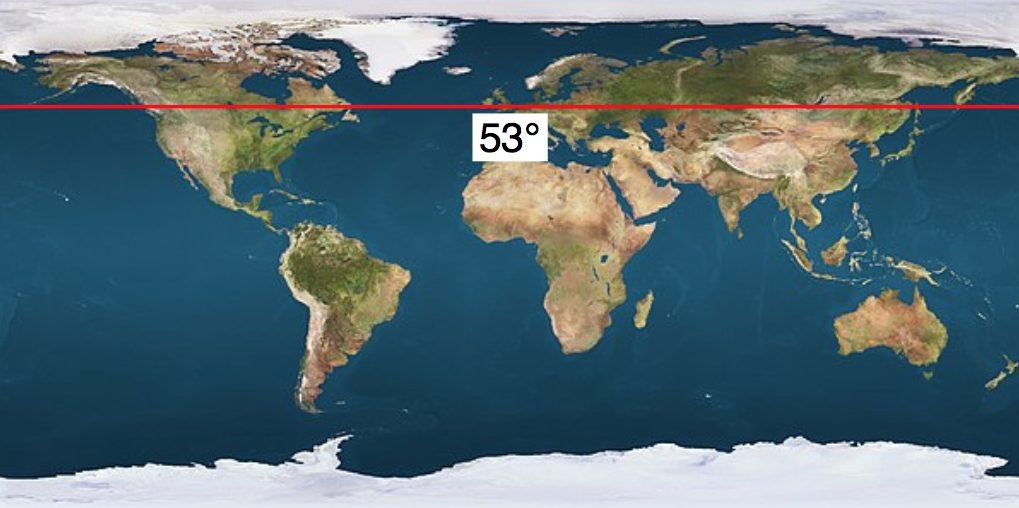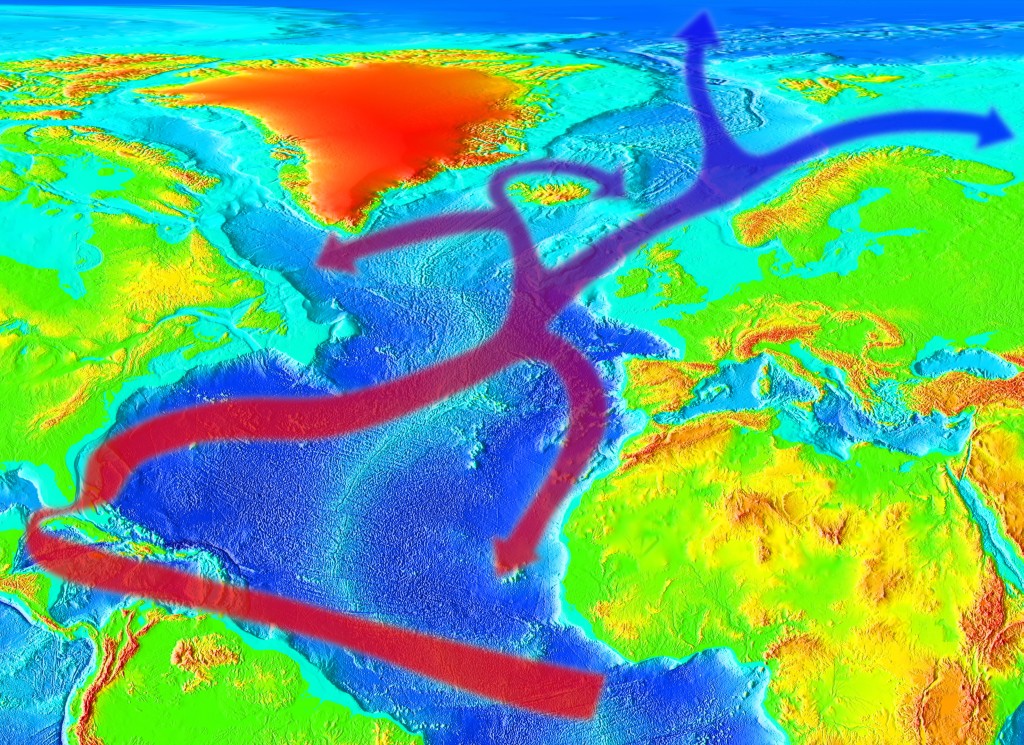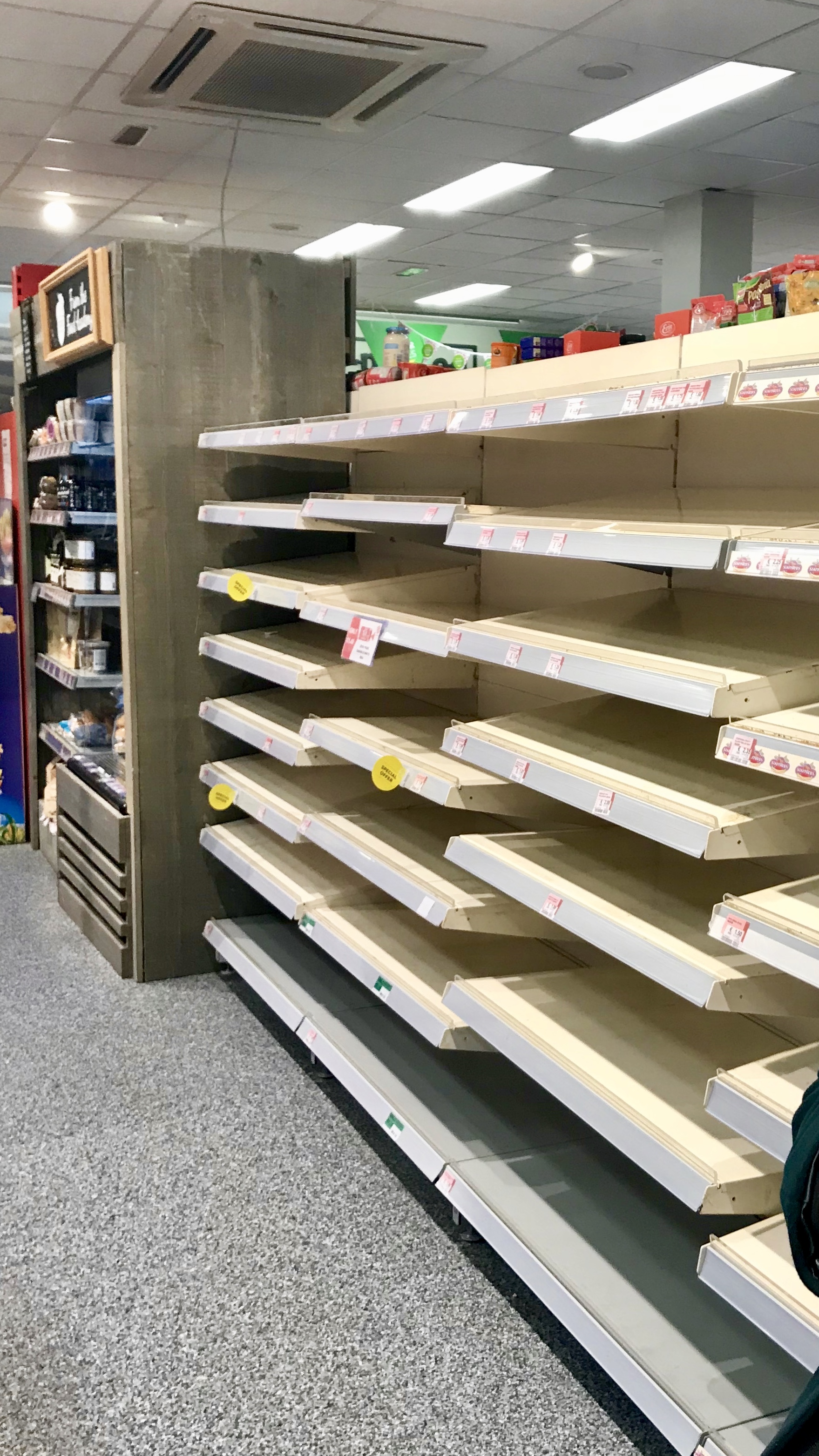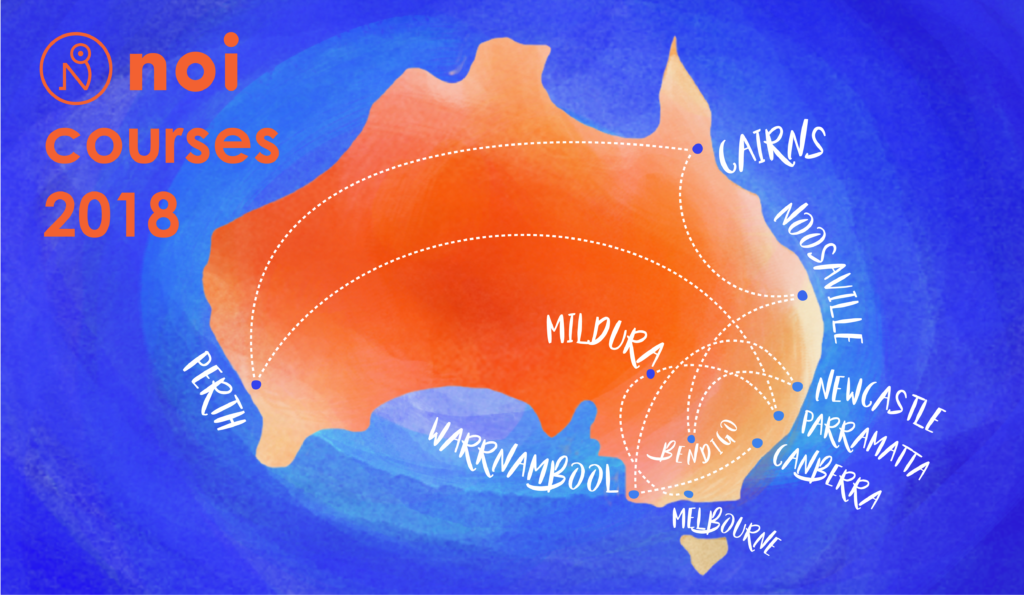
We live on the 53rd parallel. Vast swathes of land lie beneath it. Trace your finger around it on any globe and you will cross the UK, Belgium, Germany, Poland, Belarus, Russia, Kazakhstan, China, the US (Alaska), Canada (BC, Manitoba, Labrador, Newfoundland) and, of course, Ireland (home). Most of these countries are well used to bitterly cold winters with vast amounts of snow, but not here in the westernmost tip of Europe. For our weather is dominated by the Gulf Stream, a warm ocean current system that stretches from Florida all the way up to northwest Europe. This current (known as the North Atlantic Drift) keeps sea temperatures much warmer than they should be at this latitude and it moderates the climate of western Europe so winters are less severe than you may otherwise expect.

The Polar Vortex
We have been having some unusually extreme weather recently, though. Firstly, Hurricane Ophelia hit our shores last autumn, wreaking havoc and destruction, and now the recent storm coined the Beast from the East has just departed. Apparently the polar vortex is to blame for the recent freezing weather. This happened when an area of low pressure, which normally dwells at the poles keeping the cold air there, weakened and moved southwards. The prevailing winds pushed the swirling, cold Siberian air westwards from Russia across Eastern Europe and swept it on into Western Europe. Meanwhile near Portugal a new storm front was moving northwards (Storm Emma), bringing with it gale force winds and lots of rain. The two weather fronts were scheduled to meet over the UK and Ireland and expected to cause blizzard-like conditions not seen for 30 years. A perfect confluence of storms.
Snow fell, lots of it, huge drifts… and it was the real stuff. Not the half-hearted dusting you get a few times a year. The kind that our friends in Canada and the US get every winter and cope with, with consummate ease. Not here. Snow of this quantity is so rare that huge disruption ensued, schools closed, public transport halted, hospital staff worked double shifts to cover for their marooned colleagues, and emergency services worked flat out to help those in need. Everyone was glued to the Met Office updates, suddenly becoming experts on snow tyres, how to survive during a blizzard, what to do in the event of an electricity blackout and how to dig yourself out of your driveway … (just hard work folks!)

Panic in the bread aisles
Fortunately there were days of warnings with various Met Office alerts being issued and emergency planning services releasing public safety announcements. But before you knew it, everyone was sprinting to the shops to buy food for the pending confinement! Then social media began to circulate photos of empty shelves … shops with aisles of bread cleaned out, no milk, no eggs and not a firelighter to be found. Bakeries, we were told, were putting on extra shifts and working beyond full capacity.
Panic ensued with queues in the shops to beat Christmas Eve. When bread sold out, all the flour and buttermilk for making your own bread quickly followed. Naturally, the snow came and went within a week. Most people survived well and didn’t starve for the lack of a pint of milk or a white loaf!

Panic Buying and Cognitive Biases
But what struck me was the emotion behind the panic buying. Where did it come from? And what advantage might it confer? After the storm moved westwards there was some interesting discussion on the radio about the phenomenon and its origins. Professor Ian Robertson, a neuroscientist and clinical psychologist at Trinity College Dublin, remarked that this was related to a cognitive bias called the availability heuristic.
We often hear the term heuristic but what exactly does it mean and what might it have to do with panic buying?
Essentially heuristics are mental shortcuts, which allow us to solve problems and make judgements quickly. They shorten our decision-making time and let us function without the burden of endlessly analysing every detail. In a world where we are constantly being bombarded with information, being able to make quick decisions obviously has its advantages. However, there are dangers inherent in this process. Speedier decision-making can induce errors and lead to bias.
What of the Availability Heuristics?
Availability heuristics are where we make mental shortcuts based on information which comes most easily to mind. Essentially, if you can think of it easily, then it really must be important. Additionally, if you can recall multiple examples of something happening then you will believe it is more common and a more accurate reflection of the world. How often have reports of airplane accidents or train derailments led people to believe these events are more common than they truly are?
The problem here is that certain events tend to stand out in our minds far more than others. So, for example, you may hear about a spate of car thefts in your city or area; these may be well publicised in the papers and on social media. Being foremost in your mind, you may over-estimate the level of threat of having your car stolen and react accordingly (install a car alarm, electric gates, security lights or cameras … even move house!) Professor Robertson explained that because something is foremost in your mind means it may distort the estimate of how dangerous it is and how often it may occur.
He described how the availability heuristics were involved in panic buying thus: before the snow arrived people were at home, out of their normal routine, listening to the endless messages about the pending blizzard and all the potential consequences (essentially they were bombarded with danger messages). The endless publicity about shortages (even if only in one shop!), meant that it was foremost on people’s minds. Greatly overestimating the potential severity and duration of the storm, they were driven to clear the shelves of as much bread and milk in the shops as they could find: an example of availability heuristics in action. Interestingly, Professor Robertson described how difficult it is to think for yourself when a crisis is upon you, in particular when we are in a crowd. We are hugely influenced by those around us, so it may just be easier to copy others and behave like everyone else. This, he felt, played a role in the panic buying too … the contagious effect of others’ behaviour.
The heuristic of pain?
While listening to his explanation, it occurred to me that there may be some parallels between what drives our panic buying and chronic pain. Perhaps, like our panic buyers, we over estimate the threat level based on our previous experiences or our heightened expectations. Maybe, like them, focusing on the immediate threat is easy (look at those empty shelves), because we devote such a large portion of our attention towards our pain anyway. Making decisions, based on information which comes readily to mind, would therefore make sense.
When considering moving or completing a task, do we rely on that information that springs to mind quickly? Possibly we estimate the danger, like our panic buyers, as being more severe than it really is. Where context is critical, having chronic pain may be a little like being in the path of a large storm. Could it be that in some way we have taken a shortcut based on our misperception about threat levels and erroneously given it too much credence, a kind of availability heuristic perhaps?
Interested to hear other’s thoughts.
-Blanaid Coveney
Blanaid is a practising physiotherapist in Dublin, Ireland. Her professional interests include pain, epidemiology and all things brain related


I have given this some thought because twice I have experienced post traumatic stress disease (PTSD) and chronic regional pain syndrome (CRPS) simultaneously. When the autonomic nervous system, particularly the sympathetic nervous system is already primed secondary to previous emotional or physical pain, the brain may follow the path toward chronic pain because that is what is already in motion, it is already the shortest path. I think this is related to the kind of heuristic you are talking about.
I wrote a short article on this which I would like to share with the NOI community as a follow-up to your article but I don’t know how to submit it. Perhaps you can tell me how to do that. Thanks for your thoughtful article.
Hi Deborah, thanks for taking the time to drop by and share your thoughts. If you would like to contact me via tim@noigroup.com i can help you in regard to submitting a post to noijam.
My best
Tim